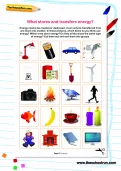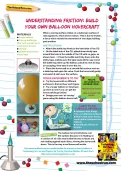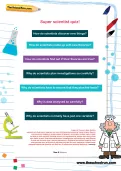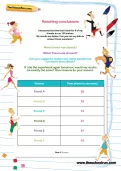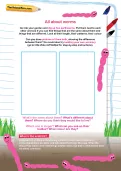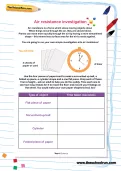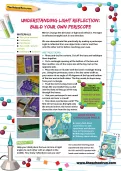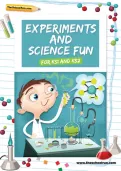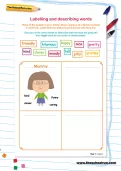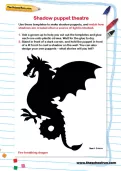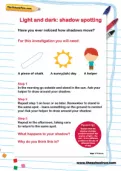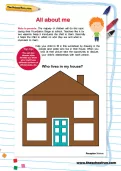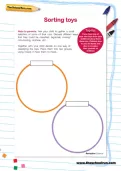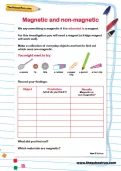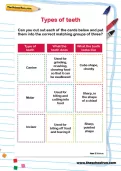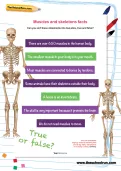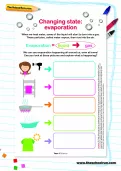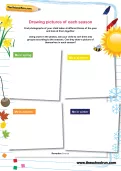Go into your garden and dig up two earthworms. Put them next to each other and see if you can find things that are the same about them and things that are different. Look at their length, their patterns, their colour Can you draw pictures of them both, showing the difference between them? You could also try building your own wormery.
or
Register to add to your saved resources
Already a subscriber? to view this content.
Human adults have up to 32 permanent teeth, which start to emerge when we are about 6 years old. Most people have all their adult teeth (apart from wisdom teeth) in place by the age of 12. Can you label this diagram of the different kinds of teeth?
or
Register to add to your saved resources
Already a subscriber? to view this content.
Air resistance is a force which slows moving objects down. When things move through the air, they are slowed down. Planes can move more quickly through the air by having a more streamlined shape – this means less surface area for the air to resist against. Do you fancy having a go at running your own simple investigation into air resistance?
or
Register to add to your saved resources
Already a subscriber? to view this content.
Play a car game listing an A to Z of parts of the body, for example: arm, belly button, cuticles… If you get stuck you may need to be creative and think of variations (for example, digits instead of fingers). If you’re playing with older children they could also list internal organs!
or
Register to add to your saved resources
The Earth has a weak magnetic field caused by the movement of molten iron in its core. The Earth’s magnetic field acts on a magnetised needle, pulling one end towards the north and the other towards the south magnetic pole. Understand more about magnets by making your very own magnetic compass from a polystyrene pizza base, a needle, a pin and a strong magnet.
or
Register to add to your saved resources
Mirrors change the direction of light and reflect it. We can demonstrate this practically by making a periscope. Light is reflected from one object into a mirror and then onto the other mirror before reaching your eyes. Collect your materials and find out for yourself!
or
Register to add to your saved resources
When a moving surface slides on a stationary surface it rubs against it, which slows it down. This is due to friction, a force which resists the movement of one object sliding past another. Understand more about friction with a fantastic practical project: make your own balloon hovercraft!
or
Register to add to your saved resources
The letters in these boxes have been mixed up. Can you unjumble them to find the name of an animal?
or
Register to add to your saved resources
Already a subscriber? to view this content.
Beans, gingerbread men, ice, washing-up bottles and cocoa powder – that's all you need to demonstrate key KS1 and KS2 science concepts to your child at the kitchen table. Packed with simple experiments, fun games (Muffled Chinese Whispers, anyone?) and parent-friendly science explanations, our Experiments and science fun for KS1 and KS2 learning pack is all you need to make primary science come to life for your child.
or
Register to add to your saved resources
Draw a picture of a family member then label it and add some words to describe them around the picture.
or
Register to add to your saved resources
Already a subscriber? to view this content.
Cut out these dragon, fairy and owl shadow puppets to use in storytelling, while also learning about the properties of light and dark when a light source is blocked by an object.
or
Register to add to your saved resources
This activity is a fantastic opportunity to introduce your child to the concept of light and dark.
or
Register to add to your saved resources
Already a subscriber? to view this content.
Help your child think about their family and living arrangements with this worksheet, which encourages them to draw a picture of their home and the people who live in it.
or
Register to add to your saved resources
An activity involving sorting toys according to a criteria discussed between you and your child.
or
Register to add to your saved resources
Already a subscriber? to view this content.
Worksheet with recording table to suggest a way of investigating whether different objects are attracted to a magnet.
or
Register to add to your saved resources
Already a subscriber? to view this content.
A worksheet listing questions for children to research about teeth.
or
Register to add to your saved resources
A cut-out and stick activity that will help your child to think about different types of teeth, how they are shaped and what they do.
or
Register to add to your saved resources
A list of statements about muscles and bones that children need to cut out and then sort into 'true' and 'false' piles.
or
Register to add to your saved resources
Already a subscriber? to view this content.
A worksheet with pictures of the process of evaporation. Children need to write in the boxes what they think is happening in each picture.
or
Register to add to your saved resources
Already a subscriber? to view this content.
A worksheet encouraging you and your child to look at and discuss how our clothes and behaviour change with each season.
or
Register to add to your saved resources
